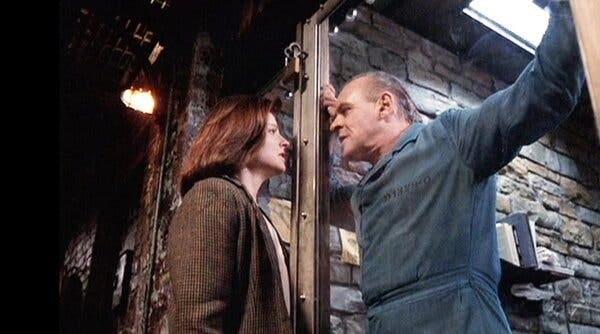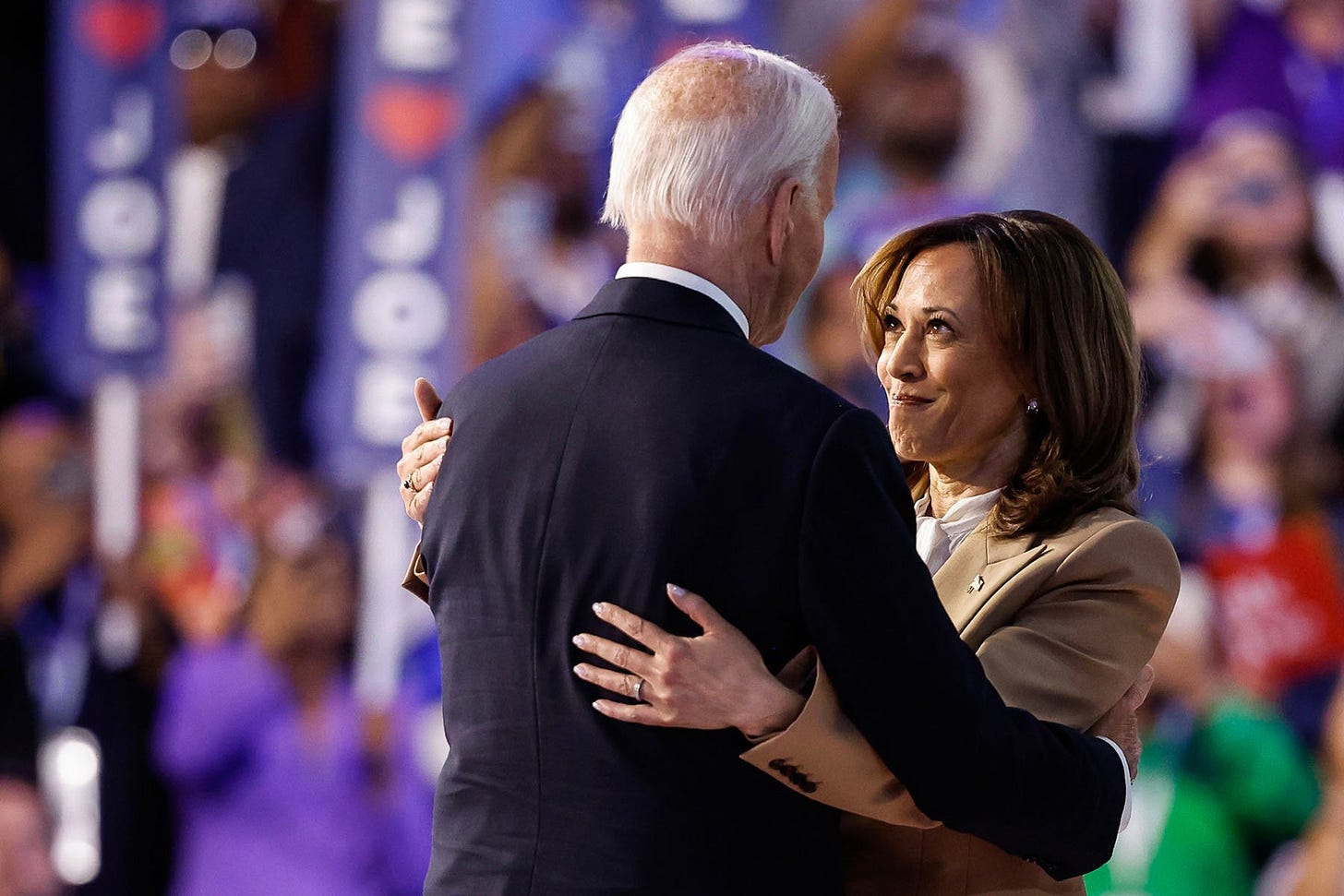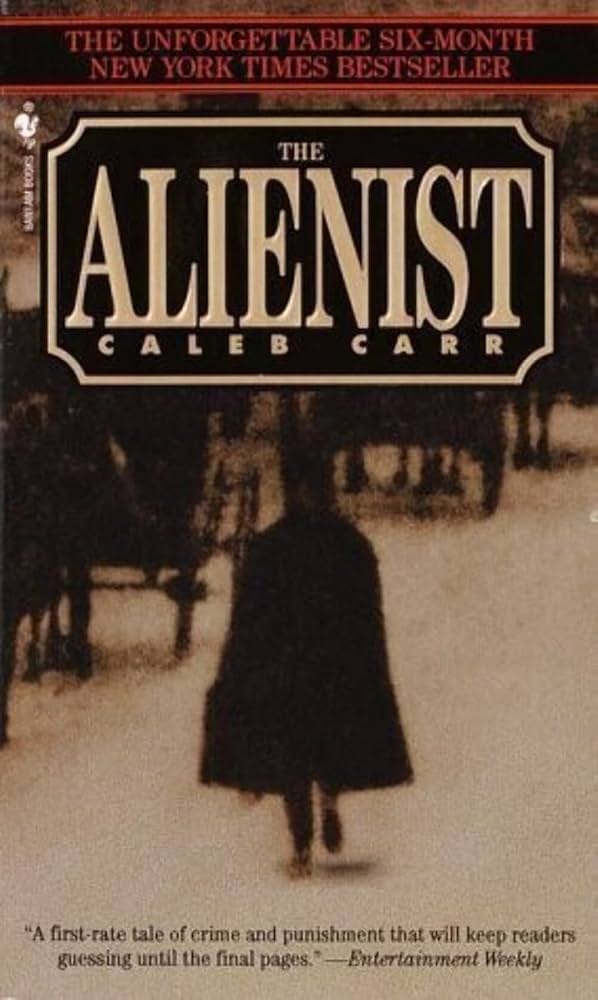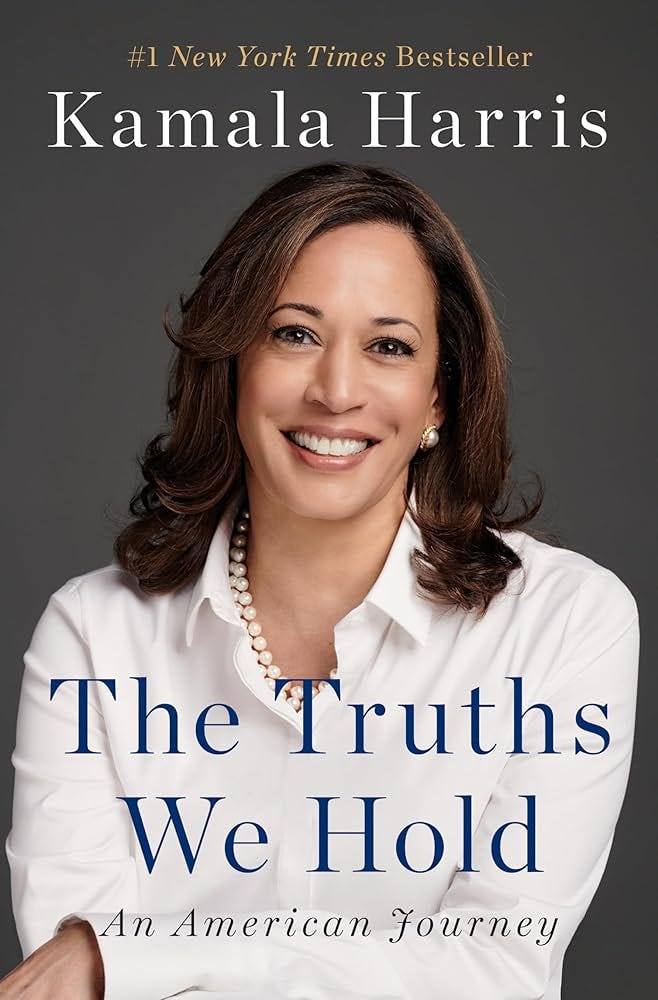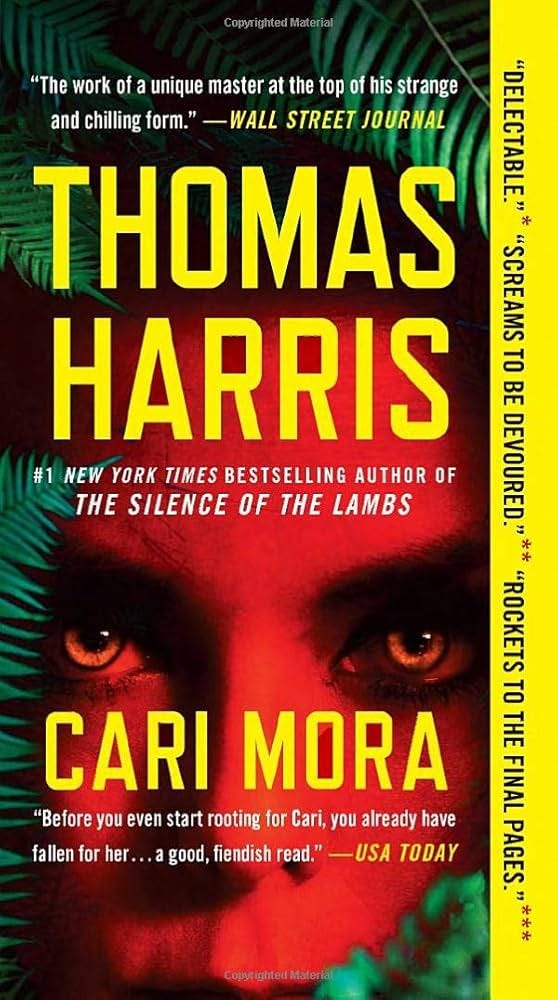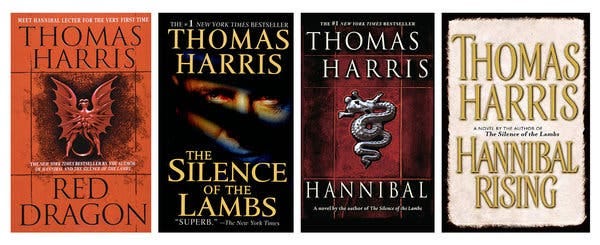THE ASYLUMS OF THE LAMBS
DONALD TRUMP IS OBSESSED WITH HANNIBAL LECTER; HE OUGHT TO BE MORE CONCERNED ABOUT CLARICE STARLING
Donald Trump is obsessed with Hannibal Lecter. According to a recent Washington Post article, Trump has mentioned the fictional serial killer, cannibal, and gourmet cook in roughly twenty speeches during the last year. He usually mentions Lecter in connection with America’s immigration problems. In the 1988 Thomas Harris novel, The Silence of the Lambs, Hannibal Lecter is held in confinement at the Baltimore State Hospital for the Criminally insane, the type of facility that is commonly referred to as an insane asylum. Many of the immigrants who arrive in America illegally via Mexico are so-called asylum-seekers. Trump appears to be trying to associate one sort of asylum (the kind that houses crazy people) with another sort of asylum (protection granted to political refugees). The Post calls Trump’s conflation of these two types of asylum “nonsensical,” noting that, “Many migrants who cross the U.S. border seek political asylum here, but that term has nothing to do with mental illness.” The Post article implies that Trump doesn’t understand the difference between the two asyla, but that seems unlikely. Trump is a shrewd communicator, and he seems eager to associate illegal immigrants with escapees from madhouses. At the recent Republican National Convention, he asked his audience, “Has anyone seen The Silence of the Lambs? The late, great Hannibal Lecter? He’d love to have you for dinner. That’s insane asylums. They’re emptying out their insane asylums.” Like many of Trump’s utterances, his comments about Lecter and illegal immigrants are extremely difficult to pin down. In the above quote, he doesn’t say exactly who is emptying out their insane asylums. He doesn’t mention any specific country and he doesn’t cite any particular illegal immigrants who have a history of mental illness. The media can’t accurately accuse him of demonizing any particular group of immigrants because Trump wisely speaks in generalities, and confusing ones at that. But his audiences understand what he is saying. The Post article quotes a Trump supporter who told an interviewer, “First time I heard it, I was like ‘What?’ But after I heard it a couple of times, it was like, ‘Oh, I get the connection now.’ He’s trying to make the point that a lot of these people that are coming illegally in this country are from mental institutions, just like Hannibal Lecter. And so you know, it has nothing to do with Hannibal Lecter except the fact that he was in a mental institution.”
When Trump refers to Hannibal Lecter, it is a dead, solid certainty that he is referring to the character as he was played by Anthony Hopkins in the 1991 film version of Harris’s novel. As smart as Trump is, he doesn’t appear to read a lot of books, including his own. Hannibal Lecter made his first appearance in Thomas Harris’s 1981 novel Red Dragon. That book was a milestone in American popular fiction. Among other things, it was the first major work of fiction to introduce the idea of the FBI criminal profiler into popular culture. Stephen King called the book, “The best popular novel to be published in America since The Godfather.” Red Dragon has twice been made into a film, but neither the 1988 version nor the 2002 version had anywhere near as much cultural influence as Jonathan Demme’s The Silence of the Lambs, which won Academy Awards for its male and female leads, its director, and its screenwriter, as well as the award for the year’s best picture, only the third film in history to garner wins in all five of those categories, and the first horror film to do so. Trump loves to watch TV and he loves movies, so it seems certain that, when he refers to Hannibal Lecter, he is picturing Anthony Hopkins in The Silence of the Lambs. But Trump would do well to forget about Lecter and focus instead on Clarice Starling, the FBI agent played by Jodie Foster in the film. Clarice Starling shares more than a few similarities with Kamala Harris, the woman who is currently trying to keep Donald Trump from returning to the White House.
Clarice Starling is the brainchild of novelist Thomas Harris. Kamala Harris is the natural child of Stanford University Professor Emeritus Donald Harris and his former wife, the late Shyamala Gopalan. Clarice Starling is a fictional character so it is hard to pin an exact birth date on her. One online source lists her birthday as December 23, 1961. Another says December 23, 1957. The Silence of the Lambs is set in 1983 and Clarice is a recent college graduate, so 1960 or 1961 seem like reasonable estimates of her birth year. The novel Hannibal, a 1999 sequel to The Silence of the Lambs, is set in 1990 and Clarice is described as being 32 years old. So perhaps she was born in 1958. It seems likely that Thomas Harris has deliberately avoided pinning an exact birth year on her. On TV and at the movies, Starling has been portrayed by several actresses, but Jodie Foster’s performance is far and away the most famous. Foster was born November 19, 1962. Kamala Harris was born October 20, 1964. Even if Starling’s exact birth date can’t be determined, she was clearly meant to have been born late in the baby-boom generation. Like Foster and Julianne Moore (who played Starling in the 2001 film Hannibal), Clarice Starling and Kamala Harris are both members of what is sometimes called Generation Jones, a cohort of people born between 1954 and 1965.
But Kamala Harris has more than a birth cohort in common with Clarice Starling. Kamala Harris’s parents divorced when Kamala was seven. The family had been living in the Midwest for several years. After the divorce, her mother took Kamala and her younger sister back to California, where a group of Shyamala’s friends – mostly African-American women with liberal political views – assisted in the intellectual development of both Kamala and her younger sister, Maya. But when Kamala’s mother was offered a job at McGill University in Montreal, Kamala and her sister were forced to leave their beloved California home and, as Kamala puts it, move “in the middle of the school year, to a French-speaking foreign city covered in twelve feet of snow…” Clarice Starling’s father, a night watchman, was murdered when Clarice was eight. Her mother tried to support the family alone, but eventually had to send Clarice to live with relatives on a sheep ranch in Montana, a place whose name begins with the same four letters as Montreal and derives from the same Latin origin (Montana means “mountain” and Montreal means “Mount Royal”). It was in Montana that Clarice first became determined to fight for the victims of violence. Her foster parents raised and slaughtered sheep on their ranch, and the sound of the spring lambs being killed has haunted Clarice ever since. The first “murder” she tried to prevent, was the killing of an old blind horse who was being fattened up in order to sell him off to a slaughterhouse.
Both Starling and Harris are professional crime fighters. Harris spent six years as California’s Attorney General, meaning that she was the top cop in a state with a population of nearly 40 million people, roughly the size of Canada’s population. Prior to that, for seven years, she was District Attorney of San Francisco. In all, she spent a full thirteen years as a top-level law enforcement official and oversaw the prosecutions of thousands of criminal defendants. But her career in crime fighting goes all the way back to 1990, when she first went to work as a deputy district attorney in Alameda County (Clarice entered the FBI academy at Quantico in the early 1980s). In 1998 Kamala became an assistant district attorney in San Francisco, where she was named chief of the Career Criminal Division and prosecuted a wide variety of felons, including murderers, thieves, and rapists. In August of 2000 she became head of San Francisco’s Family and Children’s Services Division, where she prosecuted child abusers. Few contenders for the office of the President of the United States have had as much law-enforcement experience as Kamala Harris, and no actual president has come from a crime-fighting background as comprehensive as hers. Readers of Caleb Carr’s 1984 bestselling novel may recall that Theodore Roosevelt once served as president of the New York City Board of Police Commissioners, in which capacity he helped fight crime in his hometown. But Roosevelt’s tenure on the Board lasted slightly less than two years. Even Clarice Starling, one of American fiction’s most famous FBI agents, can’t come close to reproducing the crime-fighting bona fides of Kamala Harris.
Though she never acquired a law degree, Starling was required to study criminal law during her time at the Bureau’s training facility in Quantico, Virginia. In Thomas Harris’s novel, we are told that, during her training, Clarice had to familiarize herself with Chimel versus California and Schneckloth versus Bustamonte. Both of those are real-life Supreme Court cases pertaining to police searches that originated in the California courts. They are the only real-life court cases mentioned in Silence of the Lambs, and it is a sure thing that Kamala Harris knows them inside and out.
Kamala Harris’s 2019 memoir, The Truths We Hold, sometimes reads like a Thomas Harris crime novel:
Once I started prosecuting felonies, I was assigned to homicide duty. I’d be given a briefcase on a Friday afternoon containing a pager (high-tech for the early nineties), a pen and a pad, a copy of the penal code, and a list of critical numbers to call. For the next week, whenever the pager went off, it meant there had been a homicide and I was needed at the scene. Usually, that meant leaping out of bed between midnight and six a.m. My role was to make sure evidence was collected in the proper way, with all appropriate constitutional protections in tact, so that it would be admissible in court. I often had to explain to victims and their families that there was a difference between what we knew happened and what we could prove happened. There is a giant chasm between arrest and conviction, and if you want to get from one to the other, you need legally obtained evidence.
Coincidentally, Thomas Harris’s last crime novel (to date) was published in 2019, just a few months after Kamala Harris’s memoir appeared.
Donald Trump has ridiculed Kamala Harris for failing to pass the California bar exam on her first try. In her memoir, Harris herself is equally ruthless, writing, “My mother had always told me, ‘Don’t do anything half-assed,’ and I had always taken that to heart. I was a hard worker. A perfectionist. Someone who didn’t take anything for granted. But there I was, letter [from the state bar] in hand, realizing that in studying for the bar, I had put forward the most half-assed performance of my life.” In this, too, Kamala Harris is somewhat reminiscent of Clarice Starling, who spends much of The Silence of the Lambs worrying that she’ll be dropped from her FBI training class and have to start all over again with another incoming group. In this one instance, Clarice proved more successful than Kamala, managing to graduate from Quantico with her original classmates. Alas, for Clarice, things would go downhill from there.
In Hannibal, published eleven years after The Silence of the Lambs, Clarice runs afoul of her FBI superiors early and often. By the middle of the novel she has been suspended from the Bureau. And by the end of the novel – Spoiler Alert! – she has left not only the Bureau but America as well, and is living in a fabulous Buenos Aires mansion with none other than Hannibal Lecter himself, who is now her lover and her soul mate, as well as her psychotherapist.
Kamala Harris’s story is a much happier one, though it is too soon to say how it will end. But, since leaving law enforcement in 2017, Kamala has become, first, a U.S. Senator from California, and then the Vice President of the United States. And, currently, she is the Democratic Party’s nominee for President. Whether she makes it to the White House or not, she has already proven herself a much better decision-maker than Clarice Starling. And, if Donald Trump is as smart as he always insists that he is, he should probably stop talking about fictional criminals and pay more attention to the real-life former crime-fighter who stands between him and a return to the White House. Otherwise, come next January, rather than the cheers of the inauguration crowd, he’s likely to hear nothing but The Silence of the Lambs.




